Ampelous begonia from seeds - decoration of your garden
There are many beautiful flowers that gardeners use to decorate their plots. One of them - ampelous begonia from seeds. Of course, this plant can reproduce in other ways, but in this article we will only consider a subspecies of plants that reproduce using seeds.
In general, any ampelous begonia, regardless of the method of reproduction, is sufficiently resistant to all external influences, so that it is not so difficult to breed it. This is partly why many gardeners choose it over many other colors. But even begonias have some features and needs, which we will talk about.
Content:
- Basic information about ampelous begonia
- Growing ampelous begonias - the basics
- Ampel begonias on the street
Basic information about ampelous begonia
As you know, gardeners first of all pay attention to the appearance of the flower, which is why ampelous begonia is so popular. Just imagine - thin stalks on which fairly large flowers sway (from two to eight centimeters in diameter). Peduncles are long and thin, which makes this plant even more beautiful. Modern breeders have been able to breed several species with double flowers, they look even more charming.
There are a lot of shades of color:
- crimson
- pink
- red
- golden
- lemon
Ampelous begonia can often be seen on various types of balconies, display cases and hanging baskets. There are varieties, the shoots of which reach a meter in length, and the flowers on peduncles in diameter reach eight centimeters. All this beauty grows from very small seeds.
One gram of seeds can contain more than 50,000 seeds. They are so small that some manufacturers have coated them on purpose to make it easier for buyers to plant.
Ampelous begonia is planted on the surface.
Seeds germinate only in the light, so do not overly cover them with soil.
The soil itself should be light enough. Something loose and permeable without salt is ideal. Saturation with humus is encouraged. After that, you need to ensure sufficient moisture, the surface is covered with film or glass. Well, if you can keep the temperature at 20-23 degrees, this will allow the flowers to germinate faster.
Watering during germination is done separately:
- Only sprouted flowers should not dry out even for several hours.
- And in any case, do not use cold water for glaze: the temperature should be 18 degrees and this is the minimum.
- After two weeks, the water temperature can be reduced by a couple of degrees, and the humidity - up to 70%.
- This regime should last about 30-40 days.
Growing ampelous begonias - the basics
After you have planted (you need to plant them at the rate of 2 pieces per couple of square centimeters) flowers, and they have grown a little stronger, you can lower the temperature to about 20 degrees. It is ideal if you start planting at the end of April in order to have time to plant flowers for the summer season. If your windows do not face the sunny side, or if the flowers do not receive enough sun, you can "supplement" it with a special lamp so that the total amount of light hours for flowers is about 14 hours a day.
After 6 weeks have passed, be sure to transplant plant in a larger box. Try to allocate more space for each sprout. This will have a good effect on his growth and appearance in general. The size of the new site can be from 4 to 6 centimeters. You don't need to make them less or more.
After 12 weeks have passed, one of the plants is transferred to a 12 cm pot.
A sufficiently large basket of 30 centimeters can be used. If you are going to immediately take the basket out into the street, take your time. First, the flower must be held at a temperature of about 16 degrees. Yes, he is not so whimsical, but it is better to play it safe so as not to observe afterwards a stunted plant that does not decorate your site in any way. If you are planning to collect tubersthat begin to form in begonias, remember that this happens at fairly low temperatures (below 14 degrees Celsius).
After you have successfully transplanted the ampelous begonia, you need to start feeding it little by little:
- Complex fertilizers great for this.
- Once, it should be a fertilizer that contains enough nitrogen.
- The plant will need potassium a second time, so choose wisely.
- If you think that there is too much fertilizer, and the flower may become ill, just divide it into three small parts.
Also, despite the need for water, begonia does not forgive waste of water. Before watering, be sure to see if the soil in the pots is dry. If yes, then you can pour the next portion, otherwise you should wait.
Ampel begonias on the street
Ampel begonias can also be planted outdoors. Naturally, this is done a little later, after you become sure that frosts are no longer expected. However, even after that, it is worth hardening the soil. Begonias will love your efforts to transform your site into loose, breathable soil. Humidity is good, but do not overdo it, otherwise you will lose the flowers that you received with such difficulty.
Humidity is good, but do not overdo it, otherwise you will lose the flowers that you received with such difficulty.
The moisture content of the soil should be approximately at the same level. If you find it easy to test this, don't relax. In addition, no stagnation of water should be organized.
More information on how to grow begonia from seed you can find out by watching the video.



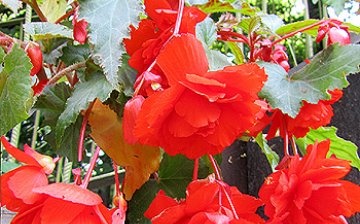
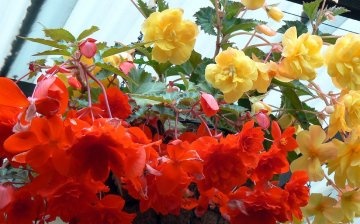
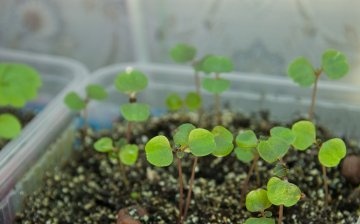
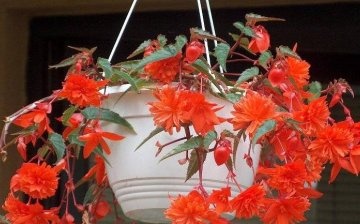
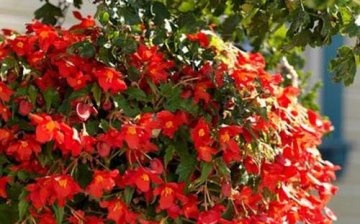





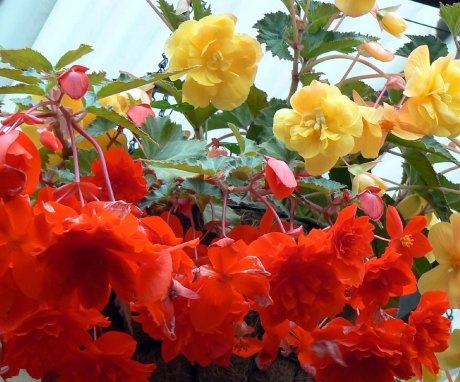
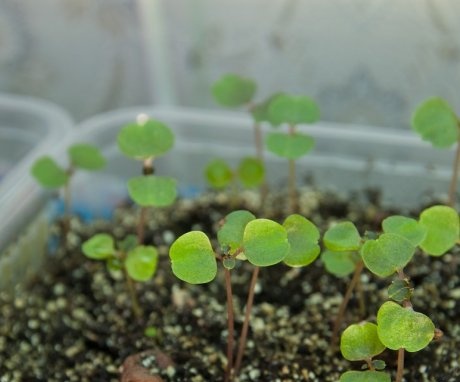
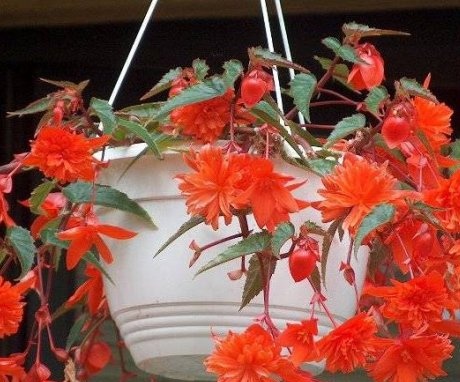
A beautiful flower, it is worth planting one for yourself, but is it necessary to hang it? Or are there varieties of non-hanging begonias or the emphasis will not interfere with flowering?
Oh my God! what's the beautiful! I love begonias - they are so elegant. But only I can’t grow them. But according to these tips I will try, I think that it will work out.